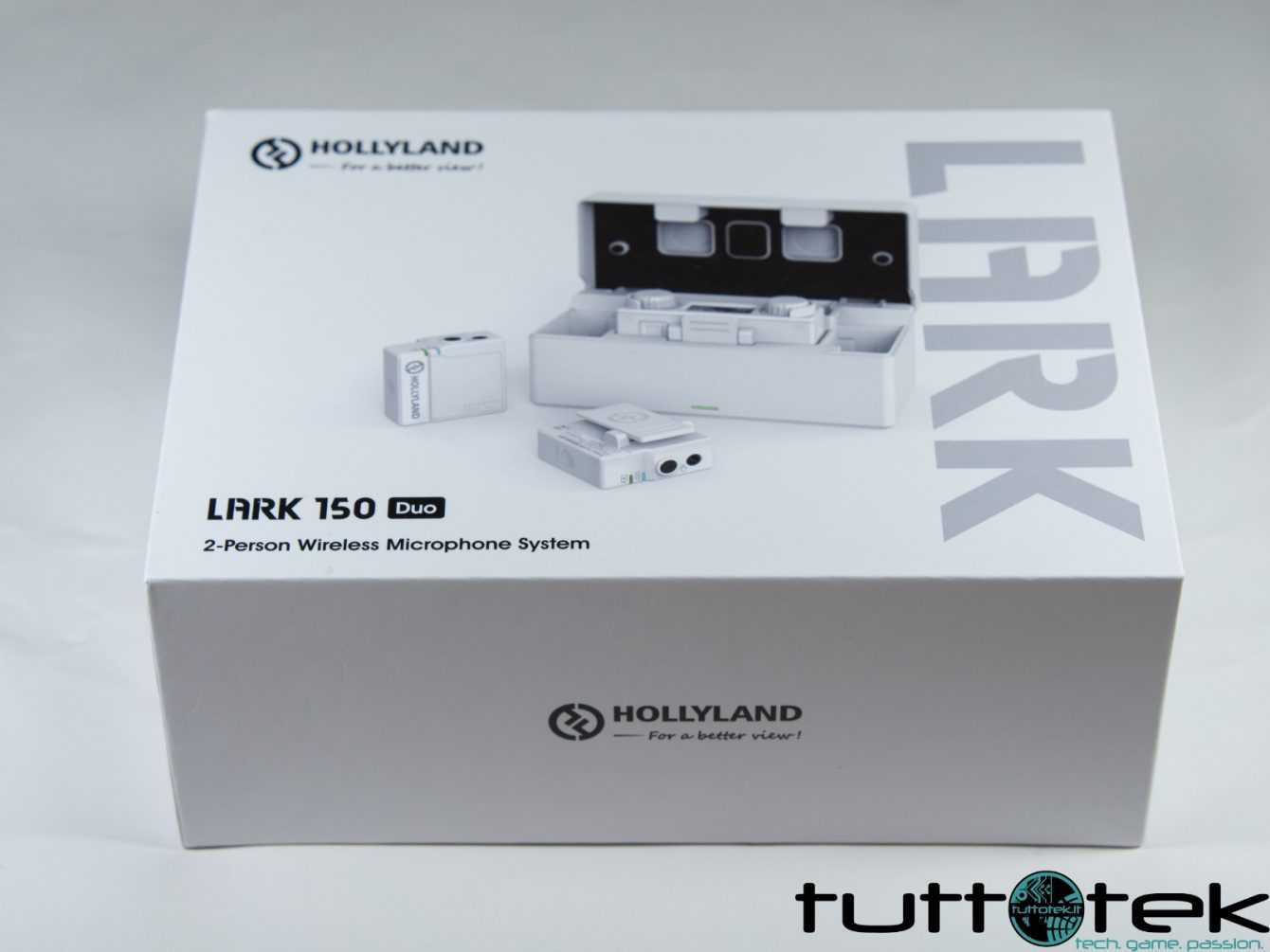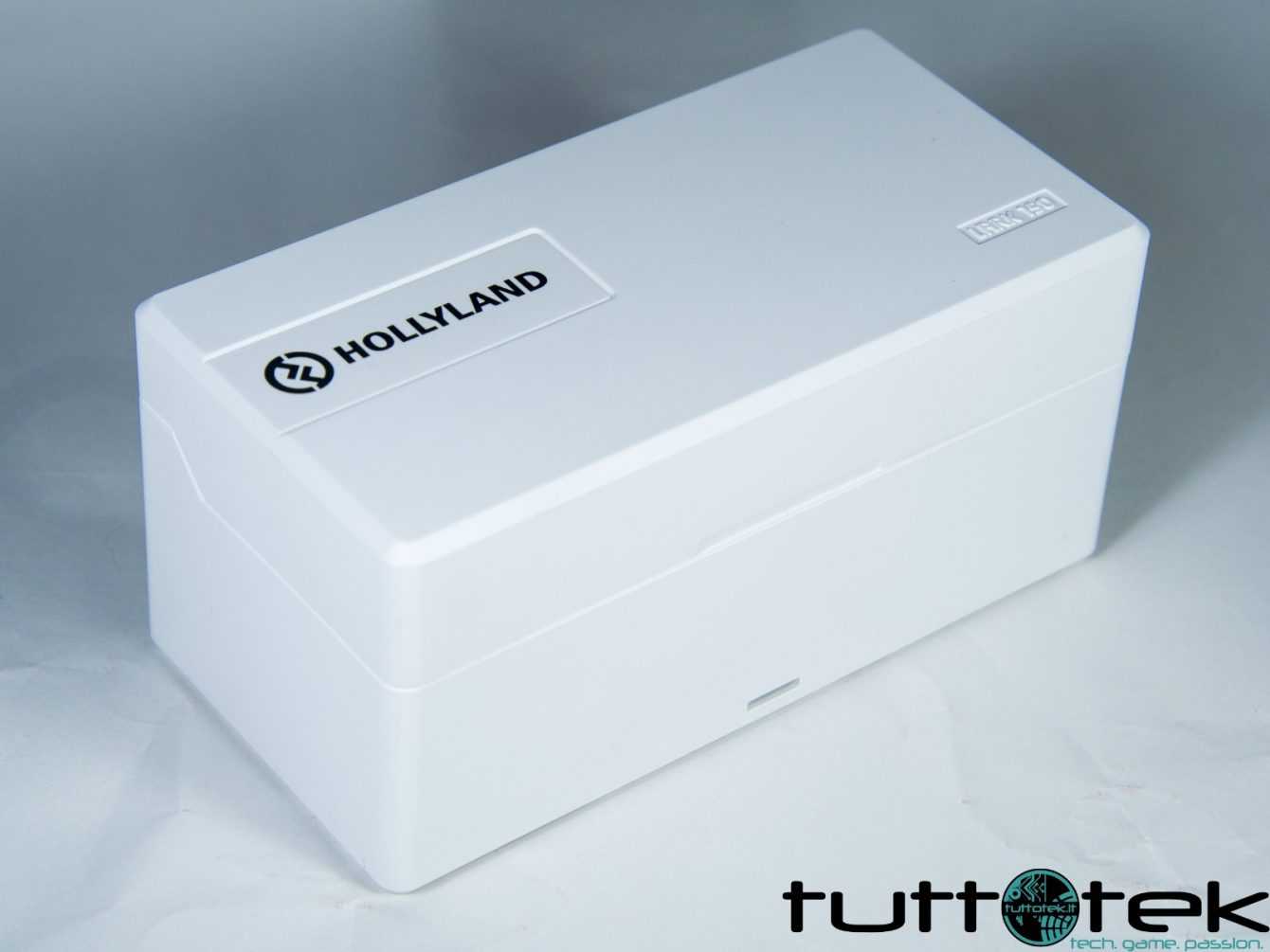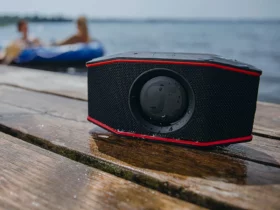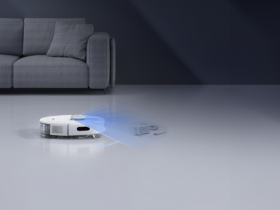In this review we are going to introduce you to Hollyland’s Lark 150 duo kit. Let’s see how these microphones behaved during the test
One of the main factors that characterize a good video is certainly the audio. Although image quality is important, audio is the focal point of everything. Imagine a video of your content creator in which you do not understand what he is saying or with a completely offset voice from the original. A good cleaning of the sound is therefore very essential to create quality content and Hollyland has thought of just that.
Whether you are a novice vlogger or with a good experience behind you, you will therefore need a good microphone or, why not, two good microphones. Let’s start this then review of the Hollyland Lark 150 duo and let’s find out together how these little gems behaved in our hands.
Data sheet
Transmitters / Receiver
- Dimensions:
- Transmitters: 37 x 37 x 17.5mm
- Ricevitore: 67 x 41 x 20,5 mm
- Weight:
- Transmitters: 20.5 g
- Receiver: 51 g
- Frequency bandwidth: 2.4 GHz AFH
- Built-in microphone: omnidirectional
- Frequency response: 20 Hz – 20 KHz
- Lavalier microphone: omnidirectional
- Frequency response: 20 Hz – 20 KHz
- Reference audio input level: -65 dBV
- Maximum input sound pressure level: 100 dB SPL
- Dynamic range: 100 dBA
- Latency: < 5 ms
- Battery:
- Transmitters: 200 mAh
- Receiver: 530 mAh
- time:
- Transmitters: approximately 4 hours
- Receiver: approximately 7.5 hours
Case
- Dimensions: 121 x 61 x 43,5 mm
- Weight: 227,5 g
- Battery: 3500 mAh
- time: about 2.5 recharges, recharging the two transmitters and the receiver at the same time

Packaging and equipment – Hollyland Lark 150 duo review
This kit comes in one very minimal packaging visually speaking. On the upper side we can see the decal of our microphones with the company logo and the product name. In the lower part we find the social contacts of the company, some of the main characteristics of the microphones the origin and the serial number. Opening the box we will immediately find a thank you card from the company for purchasing the product, the related manual and some stickers to customize the transmitters.
Once this paper bundle is removed, we finally get a glimpse the case for charging and relocating the transmitters and receiver. In addition to the case we can see another box where inside there will be a travel bag with inside two 3.5mm jack connectors – one TRS and one TRS to TRRS -, a USB cable for charging, two lavalier microphones e two microphone covers in fur to protect the lavaliers from the wind.
The case and the box with the pouch will be well kept inside the package thanks to the special housings. These are made inside a piece of plastic that will allow the transport in maximum safety. This will prevent accidental bumps that could compromise the integrity of the content. Although the kit is well equipped, we have found particularly short, for some uses, the cables with connectors jack which are used to connect the receiver to the recording device.
If we talk about a camera obviously this problem does not arise, on the contrary. The cables are long enough and allow for good use. However, if we want to connect the receiver to our PC, to use our station as a “set” for some recording, this will cause us many problems. We will in fact be forced to place the receiver on the case and, in case of using an internal sound card without a nearby support, we will be forced to purchase an extension cable. Otherwise we will end up with the receiver hanging from the cable, which is not exactly optimal for the integrity of the connectors.

Strength and solidity – Hollyland Lark 150 duo review
The size of 121 x 61 x 43,5 mm they give the case a quite important structure and perhaps in a bit too excessive. On the front there is the LED that indicates the state of charge, while on the back we find the connettore USB type-C useful for fast charging. However, this structural importance confers a unparalleled robustness, making us confide that even some slightly stronger bumps would not be able to scratch, and consequently ruin, receiver and transmitters.
Even the latter manage to guarantee a sense of high robustness, although they have some of the smallest measures in circulation. The dimensions so, at least in this case, are contained, when considering the average of similar models. However this compactness does not affect performance, but we’ll talk about this later in the review of Hollyland’s Lark 150 duo kit.

Transmitter Design – Hollyland Lark 150 duo review
The transmitters are equipped with a simple design. These are characterized by a parallelepiped-like shape. In the upper part we can see two indicator lights, one dedicated to the state of charge of the battery, while the second indicates the connection to the receiver. Next we can find the built-in omnidirectional microphone, equipped with a frequency response come on 20 Hz ai 20 KHz, it’s a female jack connector 3.5 mm for the connection of the lavalier microphone.
In the back there is the clip that will allow us to fix the microphone on the shirt or pants, depending on which microphone you want to use for recording. On the other hand we find the very useful button to change or turn off the transmitter.

Receiver Design – Hollyland Lark 150 Duo Review
Slightly different situation applies to the receiver which is slightly more complex, while still maintaining the simplicity and elegance that distinguishes the kit. In the front we can see a small OLED display in which the status of the microphones and the relative reception volume will be indicated. On the sides of the panel we find two rather important rings in size if compared to the rest.
These will allow you to increase or decrease, according to our needs, the reception volume microphones. Furthermore, by gently pressing on them and pushing them towards the receiver body, we will be able to change the related microphone connected or change its recording mode. Finally, above each of them there is a LED that indicates the connection status with the relative transmitter.
Continuing to look at the device from this point of view, let’s now move to the right side. In fact, along this side we will find the button to turn the receiver on and off, but there will also be a 3.5mm female jack connector. This connector is very useful, as it will allow us to connect headphones to understand what we are recording live and how to best adjust the volumes of the two microphones, so that neither goes over the other.
On the diametrically opposite side we find another 3.5 mm jack connector. This will serve for connect our device to the video recording device. The connection will be possible via the two supplied cables. The TRS one will be useful to connect the device to the PC, while with the TRS to TRRS cable we can connect it to the camera or to our latest generation smartphone. In the lower part we find instead the clip useful for installing the receiver on our cameras or on any other surface suitable for the purpose.
Connectivity and Operation – Hollyland Lark 150 duo review
Use this kit it is the simplest thing that can exist. Once the case is opened, the devices will immediately start working and, after being extracted from their housings, they will connect automatically. All you have to do is install the receiver at the point of interest, place the transmitters on the people concerned, with or without lavalier, and start recording.
The recording quality will be very high and the sounds and voices very faithful to reality. There will therefore be no strange voice distortions and thanks to the frequency bandwidth 2.4 GHz and AFH technology (Adaptive Frequency Hopping) the transmitter-receiver connection will not be affected by electromagnetic interference. This allows you to have one good connection even several meters away and very low latency.
The device is capable of record with both a mono and a stereo track. Alternatively we can also use a safety track with a setting of -6 dB. This function is very useful especially if you record in open environments because it will avoid any unwelcome surprise due to sounds or voices that can increase in level and therefore be annoying to listen.

According to the company the distance to maintain a good connection is about 100m and also in our tests we found a more or less similar distance before having significant losses in terms of quality. However, some small differences could begin to be noticed already after 60 m, but the quality was for the most part the same as before. To address any doubts, we also tried record audio with various walls between receiver and transmitters and also in this case we found an impeccable quality.
The only drawback instead comes from the duration. According to the data sheet, in fact, the transmitters are equipped with a battery that would guarantee a duration of about 4 hours. However to our great regret we have noticed that this is not the case, reducing the working activity to 3 hours guaranteed in 100% of cases. On some occasions we also arrived at a use of 3.5 hours, but never at the time agreed by the company.
Mono track recording
Stereo track recording
Security trace logging
Conclusions
We have now reached the end of this review on the Hollyland Lark 150 duo kit and it is therefore time to take stock. The product presents itself from the first glance as well structured and resistant. The compactness of the transmitters guarantees lightness and an almost non-existent bulk, without however affecting its performance. The recording sound quality is truly astounding and there is no noticeable alteration due to various reasons.
This is possible thanks to a well implemented connection thanks to AFH technology. Even on medium distances we can still have a good quality with a rather low latency. Quite different is the discourse as we approach the limit designated by the company. It is also important to note how it is possible to record in mono, in stereo or even with a slightly lower frequency in order not to incur sudden sounds that are too loud.
Also the fact of being able to record from two devices at the same time using a single receiver is very important, guaranteeing …















Leave a Reply
View Comments